Laura emailed me one of my most challenging questions to date when she wrote
“Any ideas about redecorating a dining room in an English Tudor home? My husband is an architect & engineer and thank goodness, a very handy man! We mostly do everything ourselves. We agree it is important to stay with the style of our home. Any ideas for a dining room?”
Everything I “know” from the Tudors comes from Philippa Gregory novels and Showtime’s program. “Tudor style” does conjure images in my head of dark, decorative half-timbering, lush colors and fabrics, and lots of texture. I found an article by Meghan Carter on Ask the Decorator who toured Stan Hywet Hall, one of the best examples of Tudor architecture in America.
She writes, “Wood paneling, wood doors, wood furniture and wood beams on the ceiling were just a few of the more prominent uses of wood in the home, and Gilles confirmed that those uses of were common in most Tudor homes. In addition to wood, stone was used frequently as flooring and hearths and white plaster was used on the walls and ceilings.”
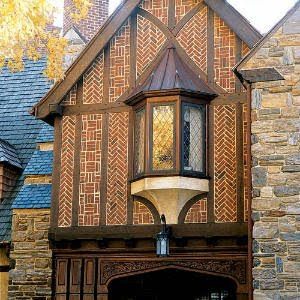 A beautiful example of a tudor exterior.
A beautiful example of a tudor exterior.
via Southern Accents
For me, I also think of dark woods, very saturated colors and plush fabrics.

This dining set is from Pottery Barn, and it isn’t “tudor,” but the top table’s legs remind me of the timbering used on exteriors.
via Pottery Barn
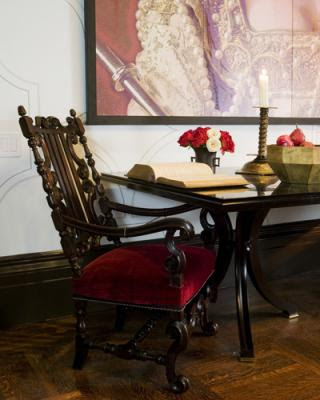
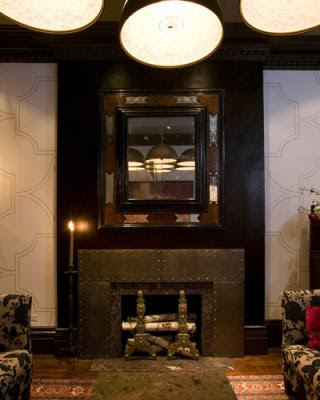 The two images above Met home created using Showtime’s “The Tudors” as an inspiration. See the whole gallery here.
The two images above Met home created using Showtime’s “The Tudors” as an inspiration. See the whole gallery here.
via Metropolitan Home
The four images below are all from a Tudor revival, so if you don’t want to go for the traditional, dark wood, dark walls, etc., this revival might give you some ideas for combining Tudor style with a lighter, airier look.


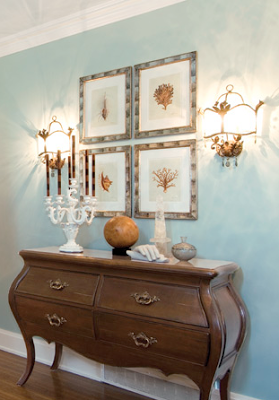
 See the whole revival and read about it here.
See the whole revival and read about it here.
via House Trends
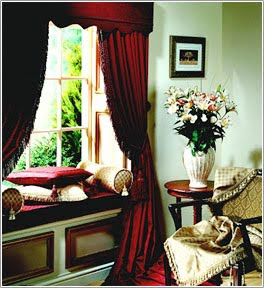 via Home Trimmings
via Home Trimmings
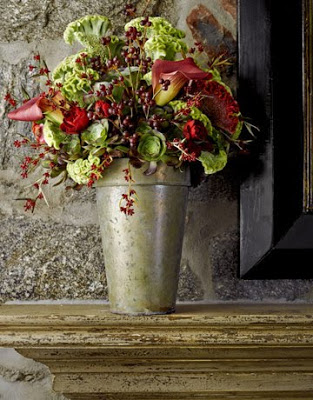 Mixing your finishes and materials ads to the rich and sumptuous environment
Mixing your finishes and materials ads to the rich and sumptuous environment
 I’ve always really liked this house from Country Living, and I think it’s a good example of “modernizing” Tudor style. The furniture is visually and physically heavy and dark, but the decor is contrasting and the room is sparse and minimal. See the whole renovation here.
I’ve always really liked this house from Country Living, and I think it’s a good example of “modernizing” Tudor style. The furniture is visually and physically heavy and dark, but the decor is contrasting and the room is sparse and minimal. See the whole renovation here.
via Country Living
The article continues with some other good points:
“The use of tapestries, rugs and drapes soften the look of the hearty wood and stone giving Tudor homes an inviting, cozy feel you would not expect. In addition to fabric, Tudor homes incorporated numerous symbols, which also helped to give the interiors a softer more pleasant appeal.
Common symbols used in Tudor homes were the Tudor rose, the thistle, the Fleur-de-lis and the linen fold, as Gilles informed me. Those symbols would be found carved into the wood moldings and furniture, woven into tapestries and rugs and featured in stained glass. Another element featured often in Tudor homes that is easy to spot is the Tudor arch, which was used on both windows and doors.
The combination of stone, wood, white plaster, tapestries, rugs, symbols and the Tudor arch give Tudor homes a distinct feel that is part storybook….”
Read the whole article here
If anyone knows of any books or websites to steer Laura towards please leave a comment below or email me and I’ll send them her way!
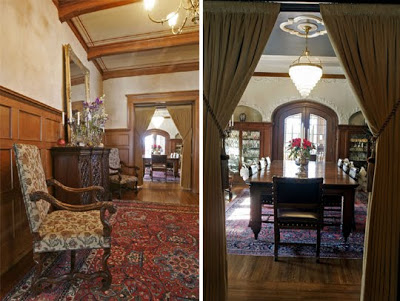
Leave a Reply